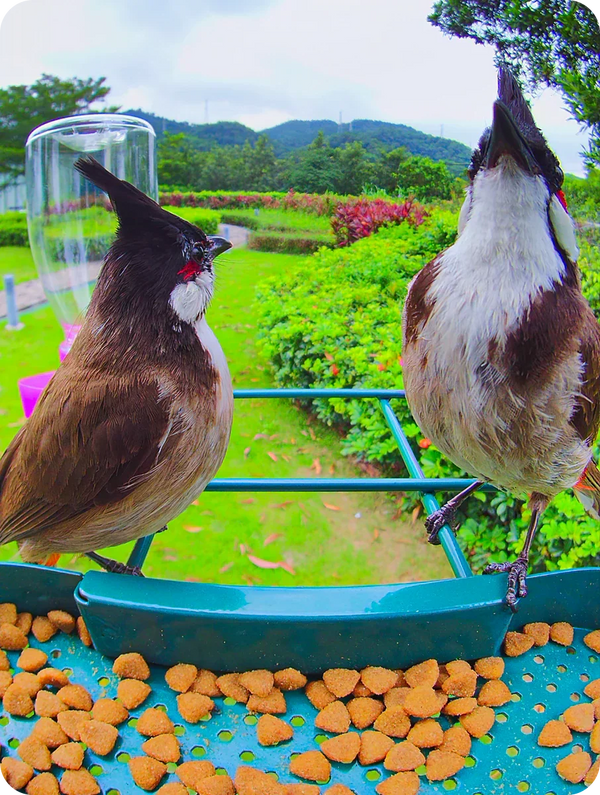Unveil the Magic: Discover the Ultimate Feeders and Cameras to Capture Hummingbirds in Stunning Slow Motion!
Welcome to the enchanting world of hummingbirds, where every flutter of their wings is a mesmerizing dance of agility and grace. These tiny birds, with their iridescent feathers and incredible speed, captivate the hearts of nature enthusiasts and casual observers alike. Observing them in slow motion adds a whole new dimension to this experience, allowing us to appreciate their delicate movements and intricate behaviors in a way that is often missed in real-time. The right feeders and cameras play a crucial role in facilitating this experience, transforming your backyard into a vibrant hummingbird haven. In this article, we will explore the best options available that will help you enhance your hummingbird observation journey and capture their magic in stunning slow motion.

The Fascination of Hummingbirds and Slow Motion Observation
Hummingbirds are not just the smallest birds in the world; they are also among the most fascinating. With their ability to hover in place, fly backward, and even perform aerial acrobatics, these creatures are a marvel of nature. Watching them dart from flower to feeder, their wings beating at an astonishing rate of up to 80 beats per second, is an experience that leaves many in awe. Observing their movements in slow motion allows us to truly appreciate the beauty of their agility, the shimmering colors of their feathers, and the delicate way they feed. Thanks to advancements in technology, capturing this incredible spectacle has become more accessible than ever. Whether you're an amateur videographer or a seasoned photographer, the ability to see hummingbirds in slow motion can deepen your appreciation for these remarkable birds and inspire you to learn more about their behavior and ecology.
Choosing the Right Feeders
To attract hummingbirds to your yard, the right feeders are essential. There are several types of feeders available, including saucer, tube, and window feeders, each with its own unique advantages. A well-designed feeder features bright colors, typically red, which naturally draws hummingbirds in. Capacity is also important; larger feeders can accommodate more birds and reduce the frequency of refills. Additionally, ease of cleaning is crucial, as maintaining a clean feeder is vital for the health of the birds. To maximize visitation, consider placing your feeders in shaded areas to prevent the nectar from spoiling and near flowering plants that hummingbirds are naturally attracted to. Friends of mine have shared their success in creating a hummingbird-friendly environment by strategically placing multiple feeders and ensuring they are well-maintained. This not only enhances their observation experience but also creates a lively garden filled with vibrant activity.
Capturing Stunning Slow Motion Footage
When it comes to capturing slow-motion videos of hummingbirds, choosing the right camera is key. Look for cameras that offer high frame rates, as this will allow you to slow down the footage without losing clarity. Features such as image stabilization are also beneficial, ensuring that your videos are smooth and professional-looking. When filming, consider lighting conditions; natural daylight is often best, but be mindful of harsh shadows. Experimenting with angles can also yield stunning results; try filming from below the feeder to capture the birds as they approach. I recall a friend who set up her camera near her feeder and was amazed at how capturing the birds' tiny details, like the flicker of their wings and the flash of their colors, brought her footage to life. With a little practice and the right equipment, anyone can create breathtaking slow-motion videos that showcase the beauty of these remarkable creatures.
Enhancing the Viewing Experience
Creating an optimal environment for observing hummingbirds goes beyond just installing feeders. Landscaping plays a significant role; incorporating native flowering plants that attract hummingbirds can enhance their presence in your yard. Flowers such as trumpet vines, bee balm, and salvia are favorites among these birds. Additionally, setting up a comfortable viewing area can make your observation experience more enjoyable. Consider adding a cozy chair, perhaps with a small table for refreshments, so you can relax while watching these incredible birds. Sharing this experience with family and friends can also enrich your observations. Organizing a hummingbird watching day can be a delightful way to connect with nature and create lasting memories. The joy of watching hummingbirds flit about, coupled with the laughter and conversation of loved ones, can turn a simple observation into a cherished event.
Embracing the Beauty of Hummingbirds
In summary, the world of hummingbirds is a treasure trove of joy and wonder, especially when experienced in slow motion. By selecting the right feeders and cameras, you can transform your backyard into a paradise for these exquisite birds. Not only will you be able to witness their stunning beauty and unique behaviors, but you'll also have the opportunity to capture their magic in breathtaking detail. So, whether you're a seasoned birdwatcher or just starting your observation journey, take action today. Equip yourself with the right tools, create a hummingbird-friendly environment, and immerse yourself in the captivating world of these remarkable creatures. The experience of observing hummingbirds up close, particularly in slow motion, is truly a gift that keeps on giving.








